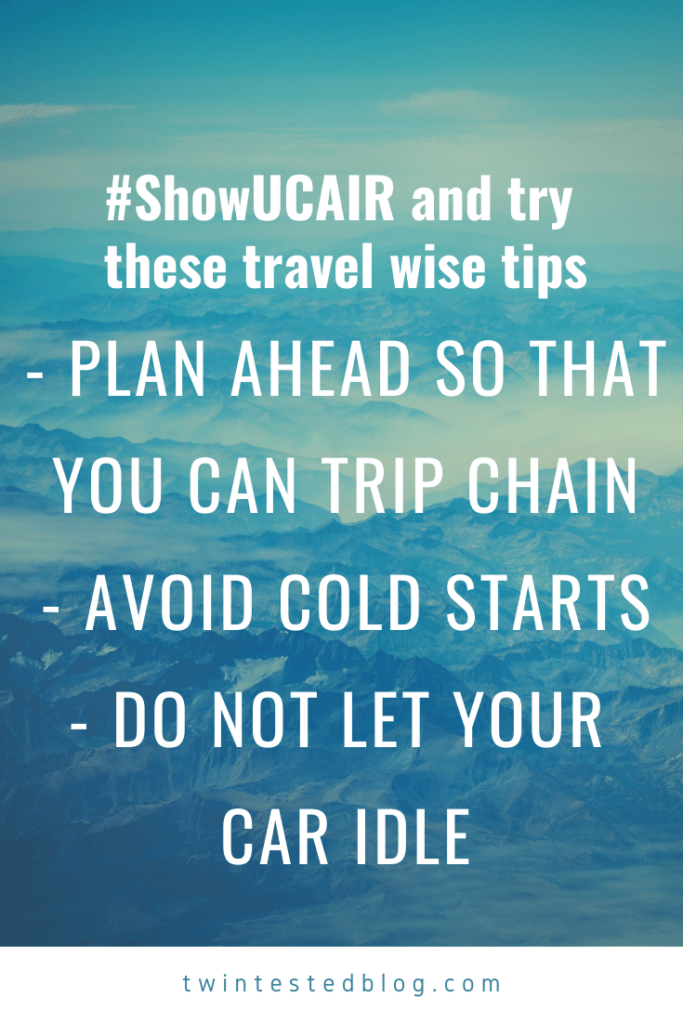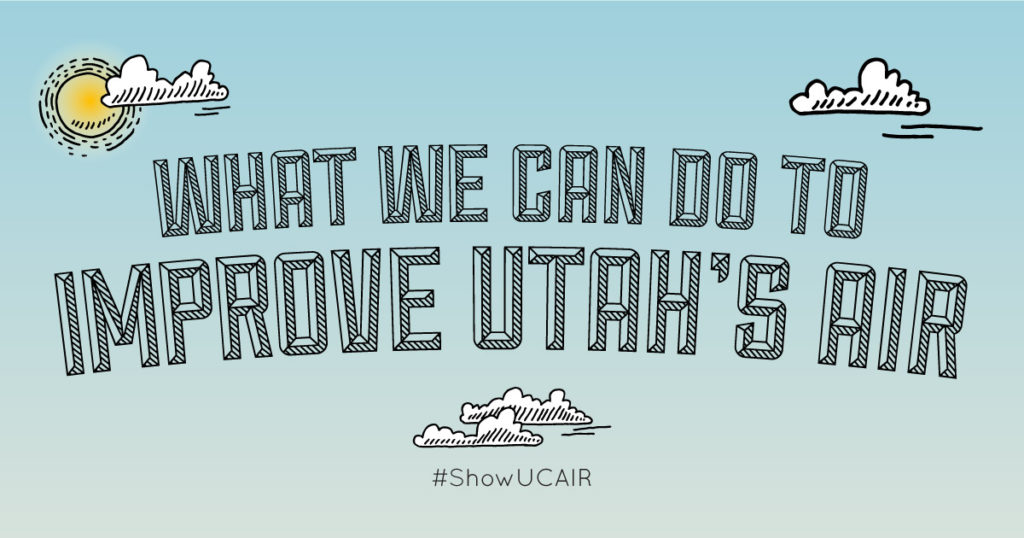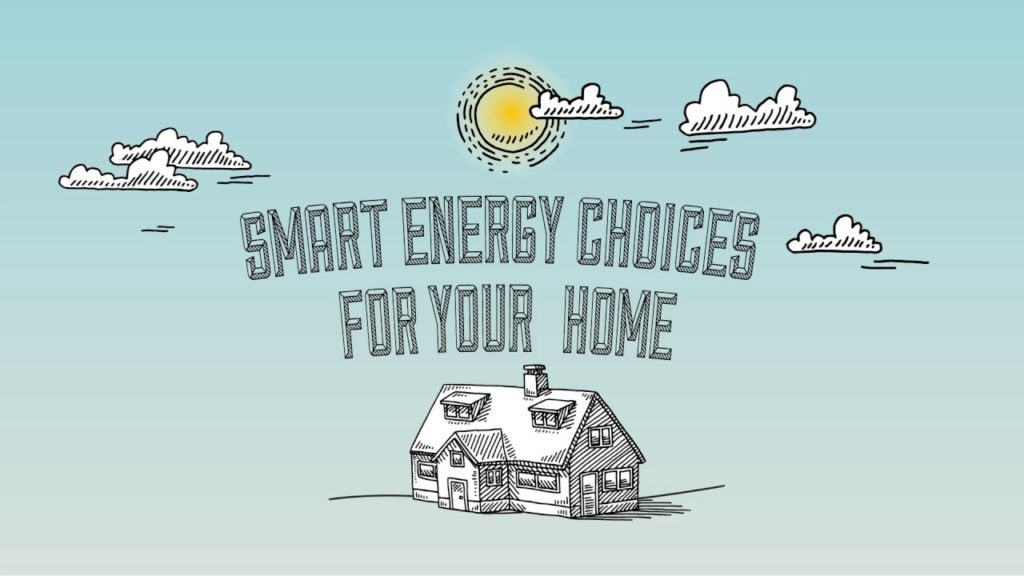This week it is all about thinking ahead before you walk out your front door! Planning not only saves our planet, but it can also save you some major time. We are in the third week of our #ShowUCAIR challenge in partnership with UCAIR (Utah Clean Air Partnership) and we have already learned so much from them we wanted to share a few tips.

How to plan ahead
Before you leave the house try to make a plan for the day – or even better your entire week. This means checking the pantry and fridge for items that you will need to stock up on as well as any household items you may need.
Something that has helped immensely for Parker and I is getting a large print calendar to hang in our main kitchen area. That way we both know what is going on for the week and can make a running errand list so we both don’t go out and buy the same thing!
Now that you have mapped out your week you want to try to trip chain as much as possible. What is trip chaining? It is combining your trips in such a way that your car’s engine does not have time enough to cool down. If the engine stays warm and you are quick at all your stops you can majorly reduce your cold starts.

What is a cold start?
Educating myself on cold starts has been one of my proudest moments this month! It is easy to be naive about driving and the actual impact we have on our community’s air but reducing cold starts can have a HUGE impact!
So, what is a cold start? A cold start is when your car’s engine is colder than its normal operating temperature and you start it. (Go watch this UCAIR video for a great explanation) The quickest way to have your car reach its optimal temperature is to immediately drive the car, rather than let it idle. In other words, get in and go.
A recent study by the Utah Department of Environmental Quality and Weber State University found that when a car reaches its optimal operating temperature, the catalytic converter can reduce emissions by 99 percent.

In addition, the study found that 75 percent of combined pollutants and emissions are emitted from a car during the first three minutes after a cold start.
UCAIR encourages all drivers to take simple steps to reduce emissions
Now that you know what a cold start is you see why UCAIR encourages all drivers to:
- Trip chain: combine all car trips to reduce excess travel and increased cold starts
- Avoid idling: by not warming up your car you can get in and go, helping the engine reach it’s optimum operating temperature faster.
- Do as few cold starts throughout the day, or better yet skip the car altogether.
Buy a cleaner, more fuel-efficient car
If you are in the market for a new car, UCAIR has gathered some great resources to begin your research.
- Purchase vehicles with an EPA Smog Rating of 8 or higher
- The EPA provides a Green Vehicle Guide
- The EPA also provides a list of SmartWay-Certified Vehicles. These vehicles are superior environmental performers and include standard gasoline-powered vehicles whose reduced emissions levels are comparable with electric and hybrid vehicles.
- Utah Clean Cities provides information about alternative fuel vehicles and fuel economy.

Look for the Energy Star label
President’s Day weekend is a great time to shop for discounted appliances and electronics. While you are scoping out all of the options make sure to look for the ENERGY STAR® label. It is the trusted, government-backed symbol for energy efficiency helping us all save money and protect the environment through energy-efficient products and practices. The label was established to: Reduce greenhouse gas emissions and other pollutants caused by the inefficient use of energy.
Turn down the heat
Another simple trick that Britt and I have both been trying to do this month is dropping our thermostats by two or three degrees. It is barely even noticeable and can make a big impact if we all do it. I (Brooke) am a hot sleeper by nature so I have not minded turning the knob a few degrees!
Who are sensitive groups when it comes to air quality?
- The elderly
- Children
- People with lung disease or breathing issues like asthma
What kind of air do you want your kids to breathe?
While doing this challenge I just keep coming back to the fact that I want to make Utah’s air better for the upcoming generation. We have so many resources at our fingertips that make good decision making possible when thinking about our role in air quality. Kids are one of the more susceptible groups when it comes to bad air quality. I want my daughter to be able to breathe easy as she grows up!
This winter, think about the effect that your home and your car play on Utah’s air quality. Instead of complaining when an inversion sets in the valley, choose to use public transportation or skip the trip, in order to reduce emissions and breathe easier.
If you haven’t done so yet, we highly recommend following @showucair on Instagram to stay up to date and in the loop on what is happening in Utah when it comes to our air quality.